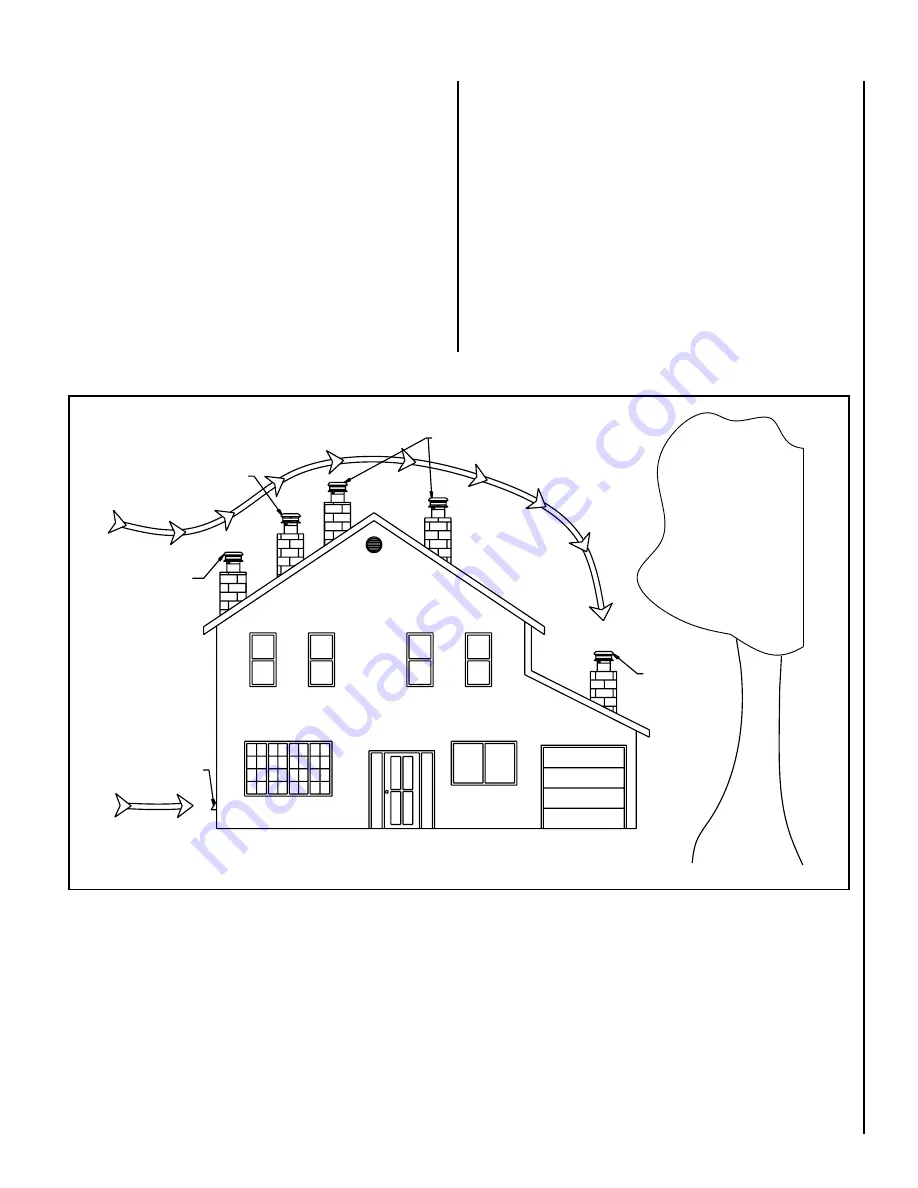
This fireplace may be installed directly on the floor or on a raised base
(for proper guidelines, refer to “Hearth Extension Requirements”) and a
minimum of 6’8” (2 m) measured from the base of the appliance to the
ceiling is required.
When selecting the location, the chimney outlet position and the direction
of the wind are important factor affecting the chimney performance. To
allow a maximum draft and to reduce wind turbulence, the chimney must:
• Penetrate the highest part of the roof.
• Be installed as far as possible of roof offsets, trees or any other
obstructions that may cause wind turbulence and back drafts in the
chimney.
• The least amount of offsets (elbows) possible.
NOTE:
A maximum of
2 offsets is allowed.
FIREPLACE INSTALLATION
Locating The Fireplace
The best location to install your fireplace is determined by considering
the location of windows, doors, and the traffic flow in the room where the
fireplace is located, allowing space in front of the unit for the hearth exten-
sion and the mantel, and taking into consideration the location of the hot
air ducts (optional), outside air kit (included with fireplace) and chimney.
If possible, you should choose a location where the chimney will pass
through the house without cutting floor or roof joists (see fireplace
dimensions
Page 15
).
Usually, no additional floor support is needed for the fireplace. The
adequacy of the floor can be checked by first estimating the weight of
the fireplace system. Weights are given on
Page 28
. Note the floor
construction and consult your local building code to determine if ad-
ditional support is needed.
Marginal Location
Wind Direction
Location
Not
Recommended
Outside Air Intake
Facing the Wind
Location
Not
Recommended
Location Recommended
Figure 13
NOTE: DIAGRAMS & ILLUSTRATIONS ARE NOT TO SCALE.
13














































